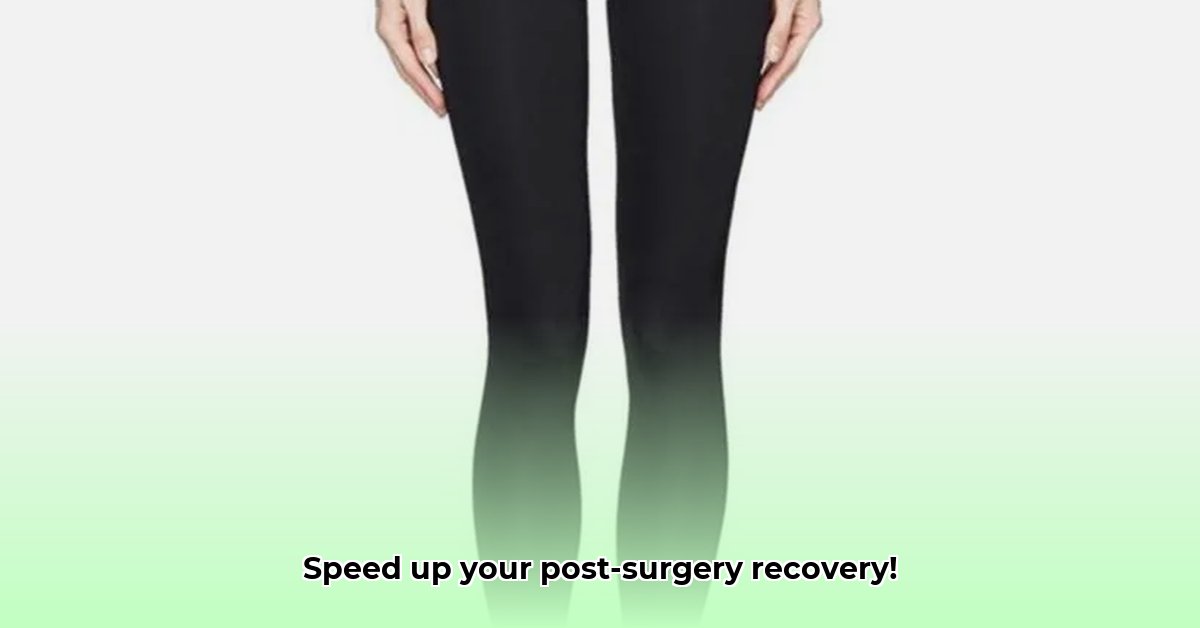
Understanding Post-Surgical Compression Garments
Recovering from surgery, particularly procedures involving significant body contouring like weight-loss surgery, requires diligent care. Post-surgical compression garments play a crucial role in this recovery process, acting as a supportive aid, not a weight-loss miracle. These garments primarily assist by minimizing swelling (edema), reducing pain, and improving circulation around the surgical site. This accelerated healing allows for a quicker return to normal activities, indirectly supporting weight-loss goals.
Types of Compression Garments and Materials
Several types of compression garments cater to different needs and surgical procedures. Understanding these differences is key to choosing the right garment for optimal recovery.
Abdominal binders: These wrap around the abdomen, providing support after procedures like abdominoplasty (tummy tuck) or weight-loss surgery.
Girdles: Offering broader coverage, girdles support the abdomen and hips, frequently used following liposuction or Brazilian Butt Lifts (BBL).
Sleeves/Pants: Designed for arm or leg surgeries, these garments improve circulation and reduce swelling in specific areas.
The materials used also influence comfort and compression levels:
Nylon/Spandex: Commonly blended, these materials are stretchy, comfortable, and breathable.
Neoprene: This material provides firmer compression but may be less breathable than nylon/spandex.
Silicone: Often incorporated for targeted support, particularly in areas requiring gentle but effective compression. Silicone can also help prevent adhesive-related skin irritation.
![Image: Various types of compression garments (abdominal binder, girdle, etc.) with labels indicating materials and compression levels.]
Choosing the Right Garment: A Personalized Approach
Selecting the appropriate compression garment is a crucial step that requires collaboration between the patient and their healthcare provider. Several factors determine the best choice:
Surgery Type: The type of surgery dictates the necessary garment type and level of compression. A tummy tuck necessitates a different garment than liposuction.
Body Measurements: Accurate measurements ensure a proper fit. Ill-fitting garments are ineffective and can cause discomfort or restrict circulation.
Individual Needs: Consider comfort preferences, skin sensitivity, and anticipated activity levels. Breathability and ease of use are important factors for daily wear.
Professional Fitting: Always consult with a healthcare professional or certified fitter for personalized recommendations and to ensure the garment fits correctly. Improper fitting poses risks.
| Technology/Material | Skin Irritation Risk | Allergic Reaction Risk | Circulation Restriction Risk | Improper Fitting Risk |
|---|---|---|---|---|
| Nylon/Spandex blends | Low (with proper care) | Low (unless allergic) | Moderate (if too tight) | High |
| Neoprene | Moderate | Moderate | Moderate | High |
| Silicone-based | Low | Low | Low | High |
This table summarizes the potential risks associated with different materials, highlighting the importance of proper fitting to minimize those risks.
How to Wear, Clean, and Maintain Your Garment
Following these guidelines ensures the longevity and effectiveness of your compression garment:
Wearing: Wear the garment as instructed by your surgeon. Generally, this involves wearing it for most of the day, removing it only to shower or as advised by your physician.
Cleaning: Hand-wash gently with mild soap and water; allowing it to air dry flat. Avoid harsh detergents, bleach, or machine drying.
Maintenance: Regularly inspect for wear and tear. Replace the garment if it shows signs of damage or loses its elasticity.
Benefits and Potential Risks
Benefits: Properly fitted compression garments offer numerous advantages:
- Reduced Swelling (Edema): They accelerate lymphatic drainage, minimizing fluid retention.
- Pain Management: The supportive compression alleviates post-surgical pain and discomfort.
- Improved Circulation: Increased blood flow to the surgical site promotes faster healing.
Potential Risks: While generally safe, potential complications exist:
- Skin Irritation: Tight fitting or prolonged wear can lead to skin irritation.
- Allergic Reactions: Rare, but possible—especially with specific materials like neoprene or latex.
- Circulation Problems: Improper fitting significantly increases the risk of circulatory problems. Consult your doctor immediately if you experience any changes in sensation or discoloration.
Frequently Asked Questions (FAQ)
Cost: Prices vary depending on the type, material, and brand. Check with your insurance provider for coverage options.
Durability: With proper care, high-quality garments typically last several months.
Long-Term Use: Your surgeon determines the necessary duration of wear. Shapewear is sometimes used later for aesthetic purposes.
Interaction with Other Care: Your compression garment should complement other post-surgical treatments; it never replaces them.
Conclusion: Partnering for a Successful Recovery
Post-surgical compression garments are a valuable tool in the recovery process, but only as part of a comprehensive care plan. They are not a weight-loss solution. Remember to always consult your surgeon or healthcare provider to determine the appropriate type of garment, ensure proper fitting, and address any concerns throughout your recovery.